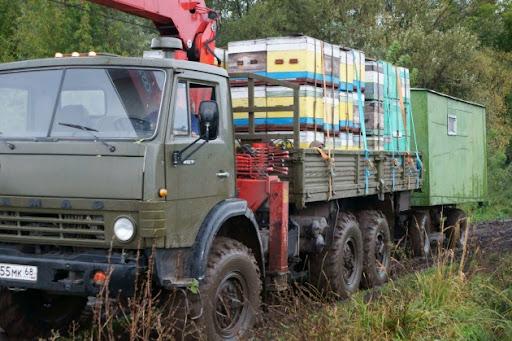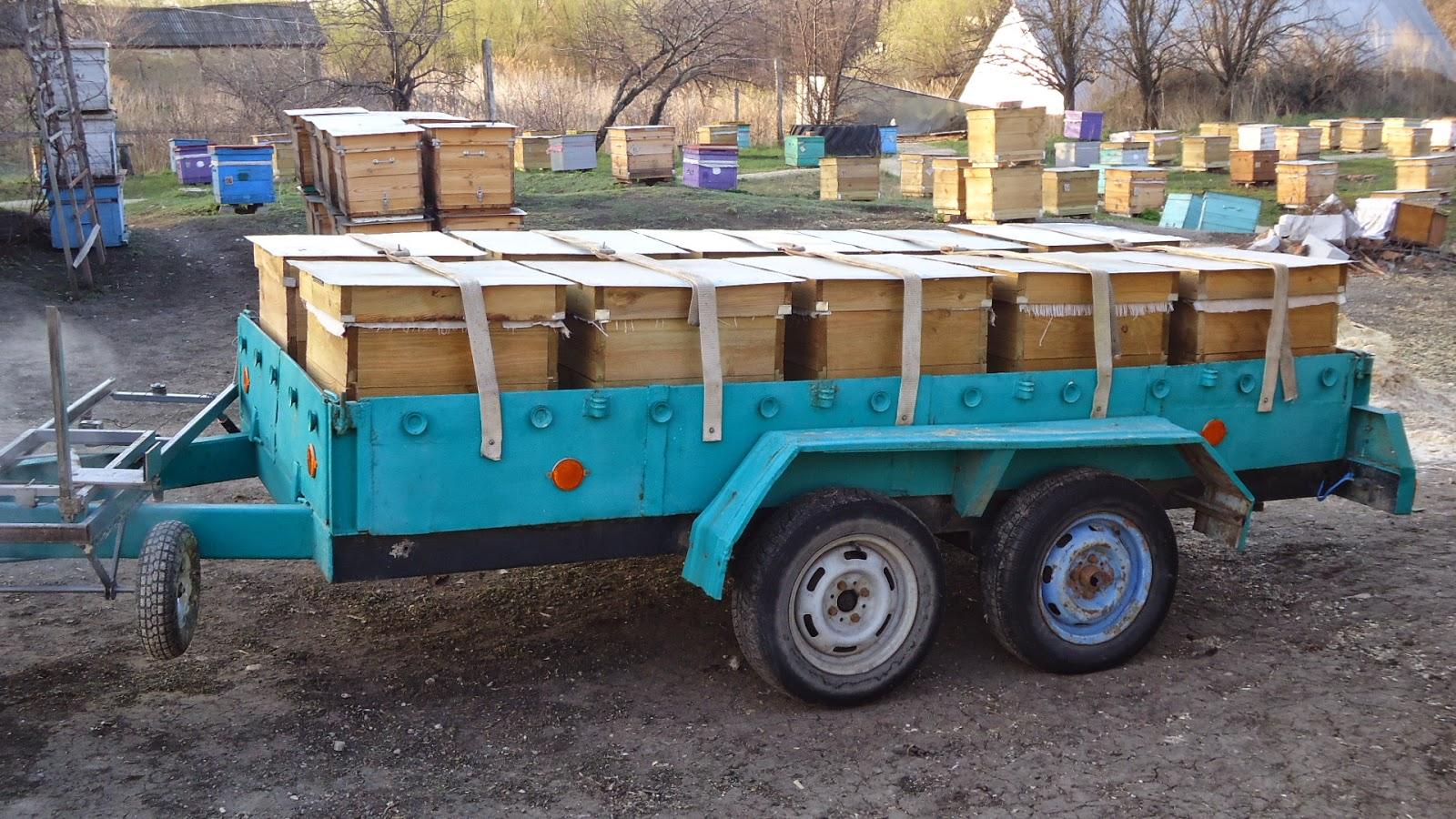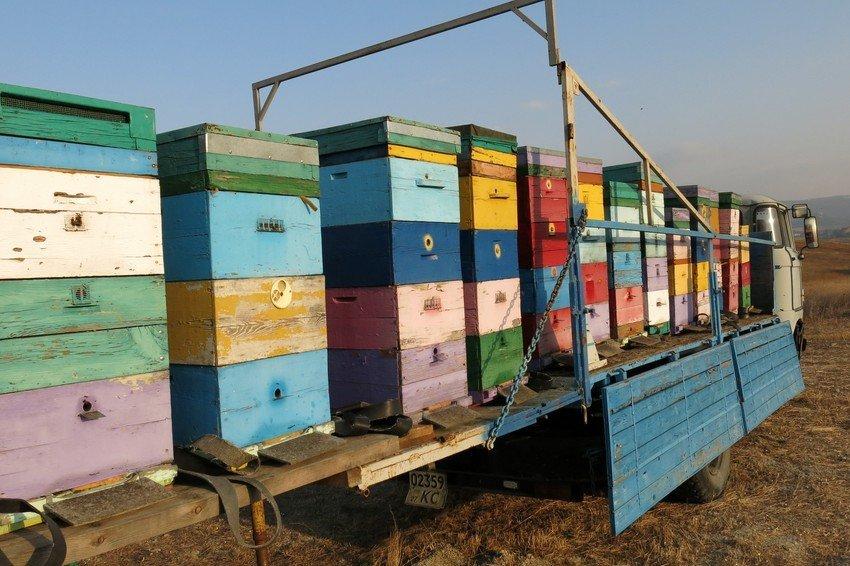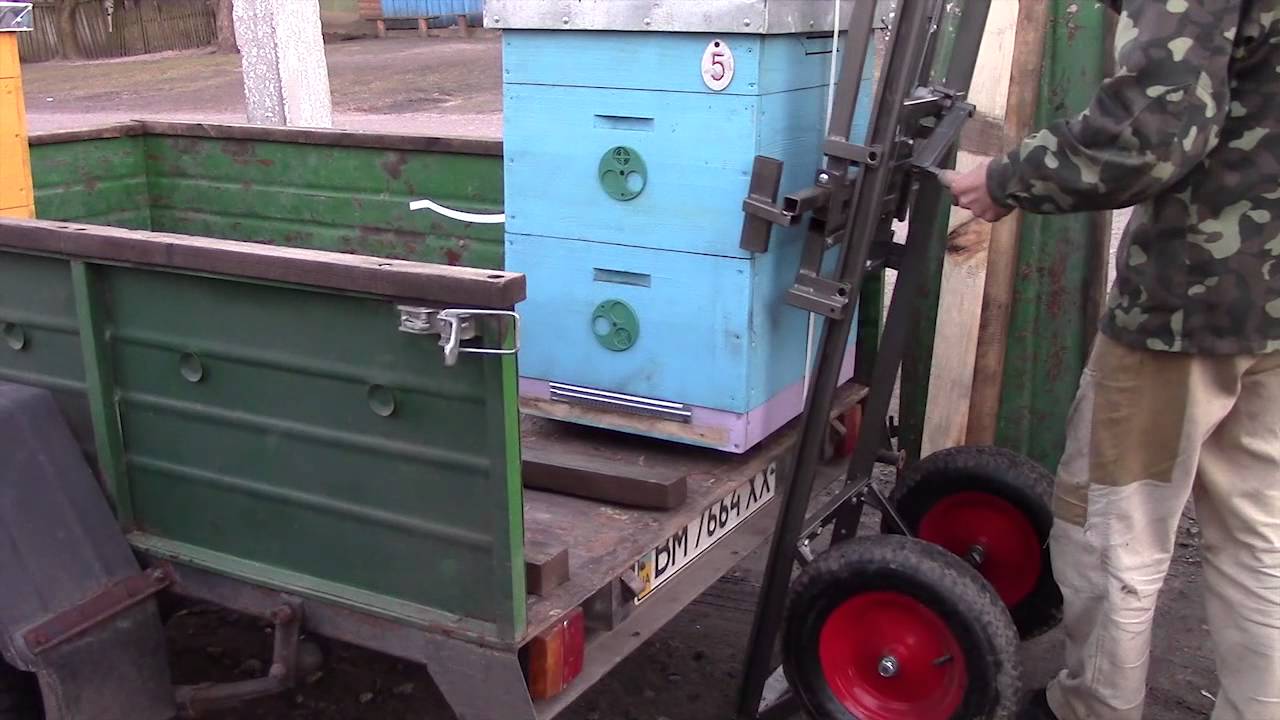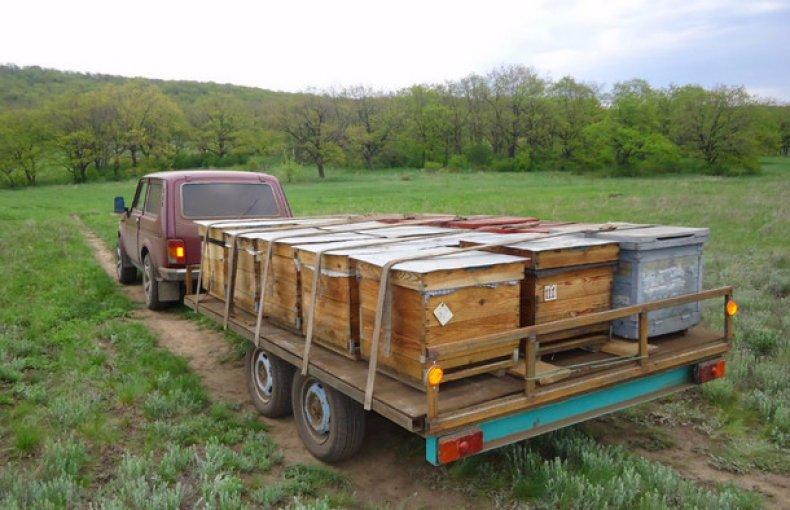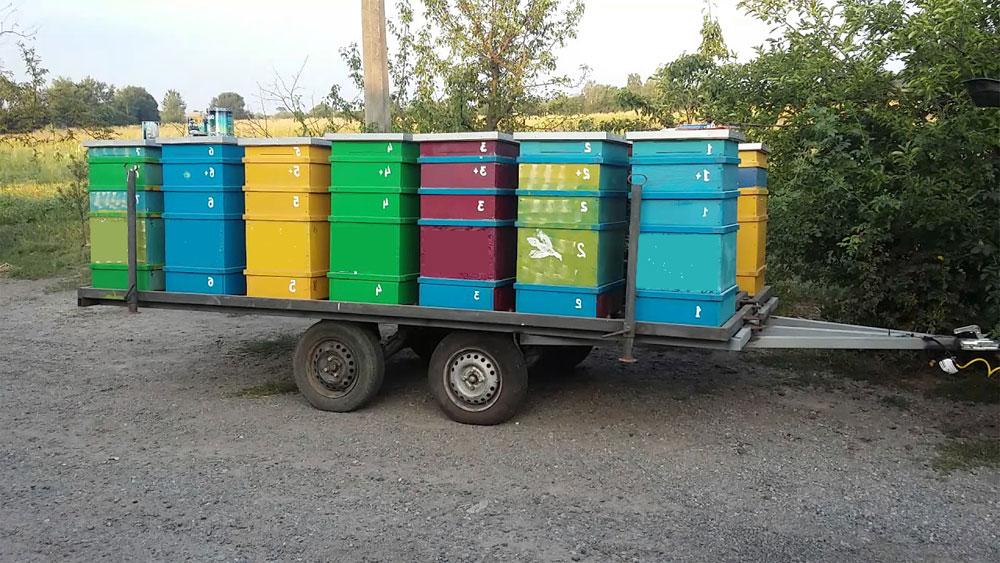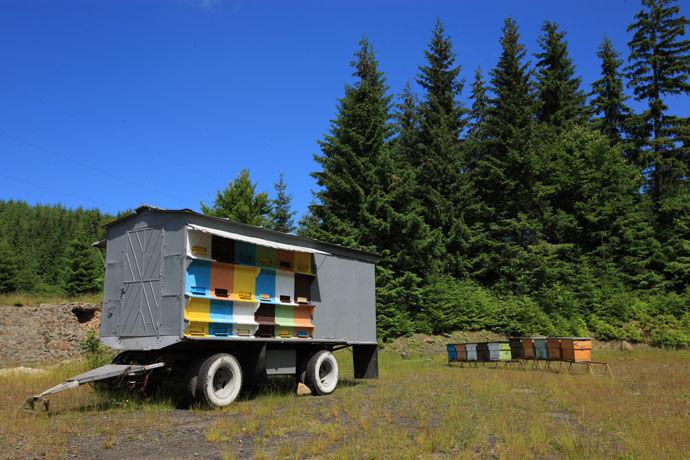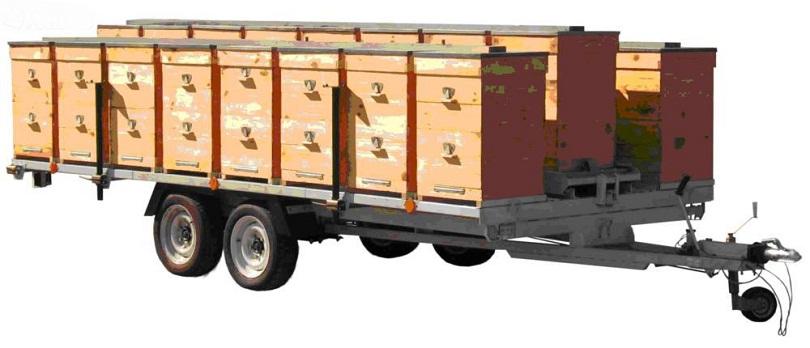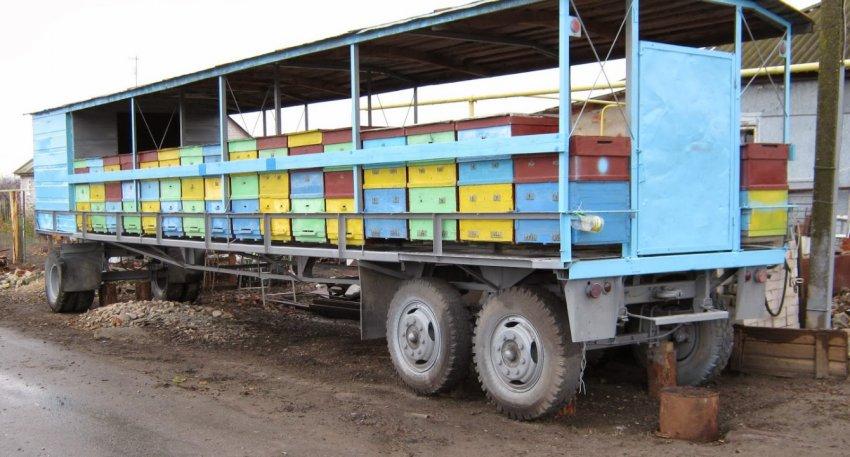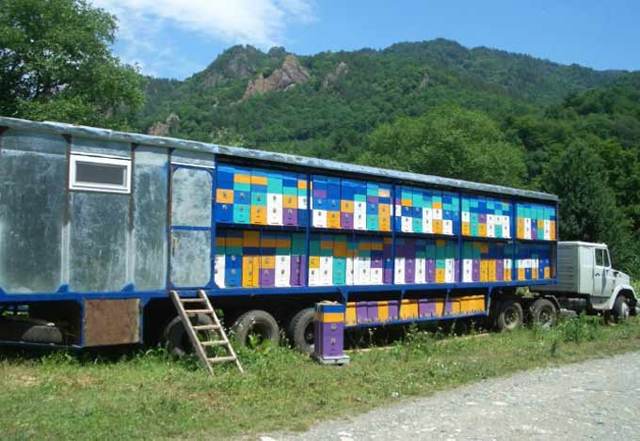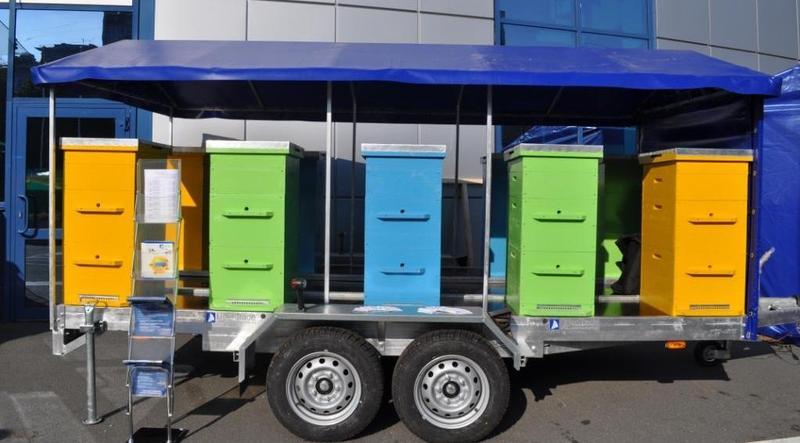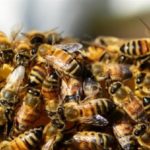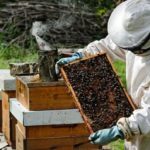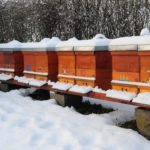Transporting honeybees is often practiced by beekeepers. There are good reasons for transportation. Firstly, with the help of mobile beekeeping it is possible to increase honey collection by more than 1.5 times, and secondly, such a measure allows the apiary owner to obtain new species. Mobile beekeeping is considered a costly and quite labor-intensive undertaking, so only experienced beekeepers decide to undertake it.
- Why are bees transported?
- Advantages and disadvantages
- When is the best time to carry out
- Preparation for the process
- Features of the new place
- Transport
- Necessary equipment
- Preparing hives for transportation
- Loading Features
- How to transport hives
- Air access
- Precautions for people
- Travel speed
- Possible mistakes
- Bees' reaction to moving
- Installation of the hive upon arrival
- What to do if the hive is damaged
Why are bees transported?
Transporting bees over long distances often becomes a necessary measure. Beekeepers take this step based on the following goals:
- installation of hives in an environmentally friendly place;
- placing an apiary near certain plants to obtain a new type of honey;
- searching for the best food supply for bee colonies;
- the emergence of a large number of competitors among beekeepers.
Some types of bees cannot fly long distances, so nomadic apiaries are organized specifically at the stage of arrangement. For other beekeepers, transporting bees is a necessary measure.
Advantages and disadvantages
When deciding to transport hives, you need to weigh the pros and cons, and also prepare in advance for the difficulties that will arise in the process. The advantages of such a measure include:
- thanks to transportation, the beekeeper can count on receiving the planned supply of honey much faster than in a stationary apiary;
- the beekeeper has the ability to control the volume of honey received and adhere to the schedule;
- The harvest of the product begins earlier and ends in late autumn.
There are a number of obvious disadvantages, for example, costs associated with transportation, the need to obtain special permission, and a high risk of insect death in a new place due to unfavorable conditions. You should also keep in mind that you will have to live in field conditions. There may be a need for a hired worker to look after the hives.
When is the best time to carry out
The most favorable time for transporting hives is early spring and autumn. During the cold season, transportation is not recommended, but in extreme cases it can be arranged.However, no experienced beekeeper will disturb insects at the end of winter, since at this time a large amount of feces accumulates in the hives.
Beekeepers see advantages in transportation in the spring. The hives do not yet have heavy frames with honey, as well as new honeycombs that insects have built. In addition, in early spring there is a small number of insects and brood in the bee colony.
As for the summer period, transportation in rain or cloudy weather is acceptable.
If necessary, you can transport the hives at night. Moving insects in extreme heat is unacceptable - this leads to the death of bees.
Preparation for the process
If the beekeeper plans to transport hives, then it is necessary to carefully prepare for the process and think through the details. It is important not only to explore a new place, but also to check inventory and equipment.
Features of the new place
There are certain requirements for a place for an apiary, one of which is the presence of a large number of honey plants within accessible proximity for bees. Other requirements include:
- absence of quarantine restrictions in the area;
- hilly terrain;
- the presence of a clean reservoir;
- a flat area on which to place hives;
- protection from direct sunlight, rain and drafts;
- maximum distance from roads, residential buildings, enterprises, and other apiaries.
There must be a minimum distance of 3-4 km from the previous location, otherwise the insects will return to the most familiar area.
Transport
Certain requirements are imposed on transport. The choice of product depends on the number of hives and how often you plan to transport the apiary. Often decommissioned high-capacity vehicles are used for transportation, allowing them to load a dozen hives at the same time.
You can arrange transportation by tractor and trailer, but in this case you will need a special license. If the beekeeper does not have suitable rights, he will be able to hire a carrier.
Necessary equipment
To transport the hives, you will need beams and clamps for connecting and fastening the bee houses, as well as a nomadic and sling mesh. For routine maintenance of the apiary, you must have the following equipment:
- empty hives;
- a set of carpentry tools;
- roevni;
- smoker;
- flashlight;
- scales in a casing;
- spray.
You should think in advance about what might be needed during the period while the beekeeper will live and work on the road, away from populated areas.
Preparing hives for transportation
If transportation is carried out in the spring, then no special preparations are required. In the summer, many frames are already filled with honey, so special dividers are needed to prevent them from falling.
Before the trip, you need to strengthen objects that can injure bees if they fall, cover the hives with an awning, and improve the ventilation of the houses. Before loading the hives, bees must be driven into them.
It is important to secure non-removable elements, otherwise they will fall due to vibration during moving. Those parts of the hives that can be removed during movement should be removed (frames, honeycombs).
Loading Features
Proper preparation for transporting hives is not enough; they must be carefully loaded into the vehicle, minimizing risks to insects and people. It is important to assess the quality of the road in advance. Loading is carried out as follows:
- load the hives only with the engine running;
- in order to prevent strong shaking, you need to lay straw on the floor and tie the hives with ropes;
- hives must be installed with the front or rear walls along the direction of the vehicle;
- The houses should be arranged as compactly as possible.
If necessary, it is possible to install a second tier, but you need to prepare strong boards.
How to transport hives
During transportation, extreme care must be taken as insects may be harmed. To protect transportation participants from swarms, you must follow simple rules.
Air access
It is important for the bee colony to provide access to air while the insects are on the road. To get proper air exchange, you need to fix mesh frames on the cuffs. Beekeepers also leave small gaps through which bees cannot escape. Another option is holes covered with mesh.
However, in the summer such measures will not be enough. It is necessary to place the hives at a distance of 15 cm from each other, providing space with small bars.
Precautions for people
When transporting an apiary, the main thing is the safety of the participants. The beekeeper must take care of this. Before leaving, you should check to see if insects can escape the hives. It is necessary to prepare antihistamines in advance to prevent an allergic reaction.
The beekeeper must provide transportation participants with protective equipment: gloves, masks, suits. During the trip, you need to keep smokers with you to protect against swarms.
Travel speed
The speed of movement mainly depends on the quality of the road surface:
- 5-10 km/h – poor quality country road;
- 15-30 km/h – uneven areas;
- 50-70 km/h – driving on a flat surface or asphalt road.
Possible mistakes
Of course, beekeepers make mistakes, especially if this is their first time encountering the procedure of moving an apiary. It should be understood that this event is quite risky and expensive. Mistakes lead to losses. Among the common erroneous actions:
- placing hives in lowlands;
- installation of houses near agricultural land;
- neighboring apiary.
In addition, many beekeepers, when installing hives on the banks of the river, do not think about the fact that the honey fields are on the other side. Many insects drown when flying across a body of water.
Bees' reaction to moving
Moving frightens the bee colony. They can hardly tolerate engine noise, vibration, or being in a confined space. In insects, metabolic processes accelerate and their need for oxygen increases.
Due to their excited state, the bees try to find a way out of the hive. Therefore, it is important to seal any cracks that a bee might crawl into.
Installation of the hive upon arrival
The first rule is that you cannot open the hives upon arrival. The beekeeper waits for the swarm to calm down. Adaptation will take 10-12 hours. During this time, it is worth arranging the houses, covering them with branches, and building canopies.
The entrances are opened gradually - after one hive. This allows insects to correctly navigate the terrain. After this you can install the frames. If the hives arrive at night, the entrances are opened at the same time.
Normally, bees behave aggressively during the first 3-4 days. While flying over an area, they are capable of attacking people and animals. To do this, the beekeeper must have a smoker ready.
On the day of arrival, the hives should be transferred from the traveling position to the usual one, and drinkers and landing boards should be placed.
What to do if the hive is damaged
Often, despite all the efforts of the beekeeper, hives are damaged during the move. Clay and tow are used to troubleshoot problems. On the road you should take a prepared clay mixture solution.
If you notice a leak of honey and insects fly out, you need to lift the lid and release them, and then remove the damaged honeycombs. Clean the bee house, repair it, install new honeycombs. Provide insects with food and close the hive. Leave the entrances open. During repairs, you must wear protective clothing.


